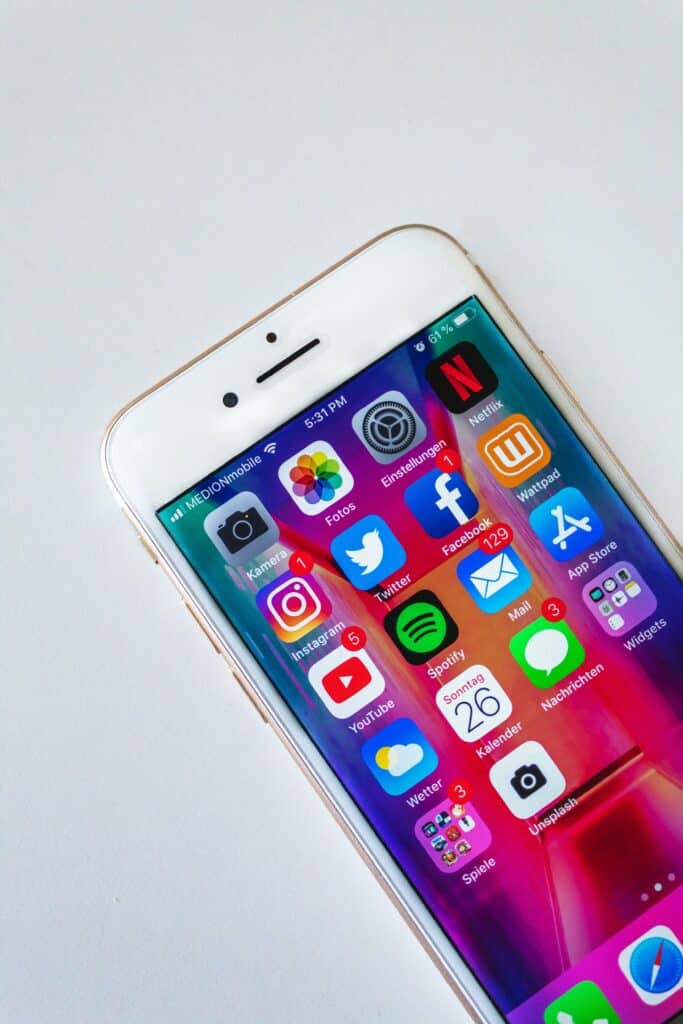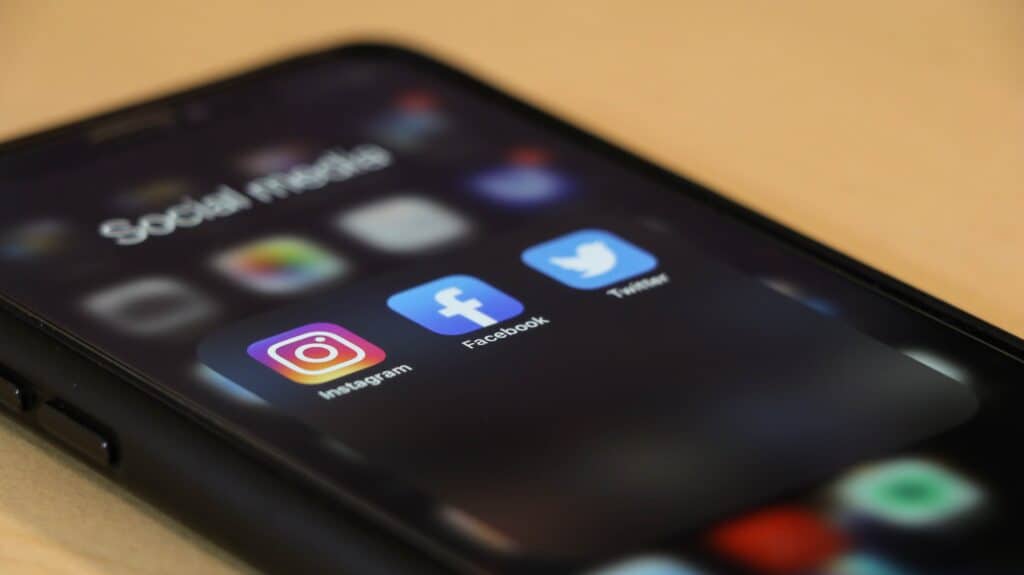The rapid growth of social media has reshaped the way people communicate and share information. Its wide influence has spread across various aspects of society, including public safety and security. Platforms like Facebook, Twitter, Instagram, and others have become not only a means of communication but also a tool that can both benefit and harm public safety when utilized in different contexts.
On one hand, social media can serve as a valuable tool for emergency response teams, allowing them to quickly disseminate vital information during natural disasters, terrorist attacks, or other crises. Conversely, it could be exploited by criminals and individuals with malicious intents, leading to cybersecurity threats such as phishing attacks, scams, and malware. Additionally, these platforms can be used to spread misinformation, creating unnecessary panic and confusion among the public.
As a result, it is crucial to develop a better understanding of the multifaceted impact of social media on public safety and security. By analyzing its potential benefits and risks, stakeholders can implement strategies that minimize threats while maximizing the positive contributions of social media to public safety initiatives.
Social Media Platforms and Public Safety
Social media has become an integral part of our lives, with platforms like Facebook, Twitter, and YouTube playing significant roles in the public sphere. These platforms have had a considerable impact on public safety and security, as they can both aid and hinder emergency response efforts.
Facebook, as one of the largest social media platforms globally, has taken steps to help improve public safety. The platform has introduced features such as Safety Check, which allows users to mark themselves as safe during natural disasters or crisis events. This feature helps emergency response teams understand which areas require immediate assistance. Additionally, Facebook has also partnered with organizations to broadcast Amber Alerts, helping to locate missing children and return them safely to their families.
However, the dissemination of false information and hoaxes on Facebook can also be detrimental to public safety. Users also have the ability to share rumors that can hinder emergency response efforts and create confusion.
Twitter has become an essential tool for public safety agencies to quickly disseminate information during emergencies. By utilizing hashtags and sharing important updates, officials can provide real-time information to the public during crisis situations. Twitter Alerts is another feature that enables users to receive notifications from trusted sources during emergencies, ensuring everyone stays informed.
Nevertheless, the brevity of tweets and the sheer volume of information can sometimes lead to the spread of panic. It is crucial for public safety agencies to monitor and address any false information that may pose a threat to safety.
YouTube
YouTube’s extensive platform allows for the sharing of informative videos on safety procedures, public health awareness campaigns, and emergency preparedness. This wealth of visual content can educate the public and guide them through a crisis, potentially saving lives.
Social media platforms such as Facebook, Twitter, and YouTube can play a vital role in public safety and security. While they offer tools that can positively impact emergency response and public awareness, they remain vigilant in preventing the spread of misinformation and negative content.
Communication and Information Sharing in Crises
Real-Time Communication
The advent of social media has revolutionized communication during crises, enabling real-time exchange of information between government agencies, emergency responders and the public. This rapid communication allows stakeholders to quickly assess the situation and make informed decisions. Social media platforms like Twitter and Facebook have become essential tools for disseminating critical information, such as evacuation routes, shelter locations, and weather updates during natural disasters.
Emergency Response and Preparedness
The use of Information and Communication Technologies (ICT) in crisis management and emergency response has significantly improved preparedness and planning. Social media functions play a vital role in disaster planning and training, collaborative problem-solving, and decision-making. For instance, authorities can use social media to monitor emerging risks, raise public awareness about potential threats, and provide guidance on preparedness measures.
Misinformation and False Information
However, the same features that make social media an invaluable tool for communication during crises can also contribute to the spread of misinformation and false information. In an emergency, misinformation can create confusion and panic, hindering the effectiveness of response efforts. It is essential for authorities to actively monitor social media platforms to address any misleading information and provide accurate, timely updates to the public.
By leveraging the potential of social media and ICT in crisis communication, emergency response, and preparedness have become more efficient and effective. However, the challenge of addressing misinformation and false information remains a significant concern that must be addressed to ensure the safety and security of the public.
Role of Government and Law Enforcement
Emergency Management
One of the main responsibilities of the government and law enforcement agencies is to ensure public safety and security. By leveraging social media, these entities can improve their emergency management efforts. Social media platforms allow agencies to quickly disseminate crucial information during crises, such as natural disasters or terrorist attacks. For example, they can share updates on affected areas, evacuation routes, and safety tips with the public. In addition, law enforcement can use social media to gather real-time information from citizens, helping them make informed decisions and allocate resources more effectively.
First Amendment and Personal Information
While social media platforms provide numerous benefits for public safety and security, they also raise concerns about the balance between privacy and free speech. The First Amendment guarantees the right to freedom of expression, which extends to online communications. However, the government and law enforcement agencies must also protect citizens’ personal information, especially when conducting investigations or surveillance.
To maintain this balance, agencies must adhere to strict guidelines when collecting and analyzing social media data. This involves respecting users’ privacy settings and not overstepping legal boundaries. Ensuring transparency in data collection practices and having clear policies in place can help build public trust and protect individuals’ rights online.
Public Safety in Various Settings
In this section, we will discuss the impact of social media on public safety and security in different settings. The focus will be on campus security and higher education, healthcare and emergency management, and public safety organizations and mobile devices.
Campus Security and Higher Education
Social media has become an essential tool for improving campus security and enhancing communication between students, faculty, and staff in higher education institutions. In states like New York and California, colleges and universities are increasingly adopting official social media channels to share safety alerts, crime reports, and emergency notifications.
Moreover, campus security teams use social media to monitor and gather information on potential threats, enabling them to respond quickly and efficiently. In turn, this helps create a safer environment for students and staff. Social media also facilitates cooperation between campus communities and local public safety organizations, allowing them to collaborate more effectively during emergencies.
Healthcare and Emergency Management
In the healthcare sector, social media has revolutionized emergency management and public safety. Hospital staff and emergency responders use platforms like Twitter and Facebook to communicate vital information during crises, such as natural disasters and mass casualty events.
These platforms are utilized to share real-time updates, coordinate relief efforts, and disseminate life-saving information to affected communities. One notable example is the use of social media during Hurricane Harvey in 2017, where public safety organizations relied on them to rescue thousands of people when the 9-1-1 system was overwhelmed.
Public Safety Organizations and Mobile Devices
The proliferation of mobile devices and the constant connectivity they offer have significantly impacted the way public safety organizations use social media. Law enforcement agencies, fire departments, and other first responders have integrated social media into their operations in order to provide immediate, accessible communication with the public.
With smartphones and other mobile devices, citizens can engage directly with public safety officials, report incidents, and receive updates on emergencies. Police departments and other organizations have established protocols and best practices to ensure the responsible use of social media for public safety purposes, mitigating potential risks and privacy concerns.
By incorporating new communication channels and harnessing the power of social media in various settings, public safety professionals have succeeded in building stronger relationships with the communities they serve, ultimately creating a safer environment for all.
Effect on Situational Awareness and Decision Making

Real-Time Information and Actions
The advent of social media has significantly impacted public safety and security by providing real-time information for situational awareness. This information helps emergency management and public health professionals to gather data from a variety of sources, allowing them to allocate resources more effectively during incidents. Social media platforms have become an essential way to disseminate information, correct misinformation, and address questions and issues from the public in a timely manner.
Decision-Makers and Training
In the realm of public safety and security, decision-makers must be well-trained to utilize social media for enhanced situational awareness and decision-making. The internet serves as a medium to instantly access information from various sources, leading to more informed decisions. Training programs should include guidance on navigating social media platforms and understanding the implications of public sentiment on security measures. Decision-makers should also be made aware of the potential for false or misleading information and the importance of verifying sources to maintain credibility and accuracy in their decisions.
Public Perception and Reputation
The widespread use of social media can also have a significant impact on the reputation of public safety organizations and professionals. It is crucial for these entities to maintain a strong and consistent presence on social media platforms to foster a positive public perception. Transparent communication with the public, addressing concerns, and countering misinformation can help establish trust and confidence in their ability to ensure safety and security. Additionally, fostering a strong reputation in the digital space can lead to improved cooperation between various stakeholders, including the public, law enforcement, and emergency management agencies.
Online Threats and Protection Measures
Active Shooter and Emergency Planning
In the event of an active shooter situation, social media can both help and hinder public safety. On one hand, it can provide real-time updates and facilitate communication between emergency responders and the public. On the other hand, misinformation can spread rapidly, potentially causing panic or hindering law enforcement efforts.
Volunteers and Online Information Protection
During emergencies, volunteers play a crucial role in providing aid and assistance to those affected. However, sharing sensitive information about volunteers or their locations on social media can expose them to potential threats. To protect volunteers and maintain operational security, organizations should establish guidelines for sharing volunteer information and emphasize the importance of safeguarding personal details.
Natural Disasters and Information Obtained
In the wake of natural disasters, such as storms and hurricanes like Hurricane Harvey, social media serves as a vital tool for sharing information about affected areas, resources available, and coordinating rescue efforts. However, the reliability of information obtained from social media during these disasters can be uncertain, leading to confusion and potential missteps by response teams. It is essential to identify and follow trusted sources of information, as well as exercise caution when acting on information obtained through social media channels.
Conclusion
The impact of social media on public safety and security is undeniable. In recent years, law enforcement agencies have recognized the potential value of using these platforms for purposes such as preventing and solving crimes, as well as fostering positive relationships within their communities. By employing social media tools strategically, authorities can enhance safety by monitoring for signs of potential threats, sharing relevant information with the public, and encouraging citizens to report suspicious activity or participate in crime prevention initiatives.
However, the widespread use of social media also presents security and privacy challenges. As users continue to share vast amounts of personal information online, they become more susceptible to privacy breaches, cybercrime, and online harassment. Therefore, it is crucial for individuals to implement good cybersecurity practices when interacting on social platforms. This includes using strong passwords, enabling two-factor authentication, and avoiding oversharing sensitive information.
Moreover, organizations and security professionals must also adapt to the influence of social media on security operations. The real-time nature of these platforms provides valuable intelligence on potential threats and emergencies, making it essential for security teams to monitor social media for relevant information and emergent situations.
In conclusion, social media’s impact on public safety and security cannot be ignored. Its positive potential, coupled with the challenges it poses, calls for a collaborative effort from law enforcement, individuals, and organizations to optimize the benefits of social media while minimizing the associated risks. By embracing the opportunities provided by these platforms, society can better work together to ensure safety and security in an increasingly interconnected world.
Frequently Asked Questions
How does social media aid in crime-solving?
Social media platforms can be beneficial in crime-solving by providing law enforcement agencies with valuable information. For instance, users may post videos or photos of criminal activities, making it easier for authorities to identify suspects and gather evidence. Moreover, social media allows law enforcement to communicate with the public and solicit crucial tips that could help solve cases.
How does social media contribute to police brutality?
Although social media does not directly lead to police brutality, it plays a significant role in making incidents of excessive force more visible to the public. Such livestreams and recordings can help hold law enforcement officers accountable. However, the impact of these videos can also trigger widespread public outrage, leading to protests and challenges related to policing tactics.
In what ways does social media influence safety and security?
Social media influences safety and security by providing platforms for communication and information sharing in emergencies. It enables authorities to deliver real-time updates during crisis situations and can help users stay informed about potential dangers. However, the downside is that it poses cybersecurity risks, as malicious users can exploit personal information. Hence, users should strive to protect their online privacy.
How does social media pose security threats to users?
Social media users can face security threats through several means, such as being targeted for identity theft, phishing attempts, or cyberbullying. Furthermore, oversharing personal information may inadvertently expose users to physical threats from criminals leveraging their online activities to plan victimization. It is essential to maintain safe practices on social media like using strong passwords and being cautious about the information shared.
What role does social media play in law enforcement communication?
Social media plays a pivotal role in law enforcement communication by facilitating interaction with the public. Agencies can use these platforms to inform the community about ongoing cases, request assistance, or share critical safety alerts. Social media can also help disseminate news quickly and at a low cost, making it an essential tool in modern law enforcement communication strategies.








